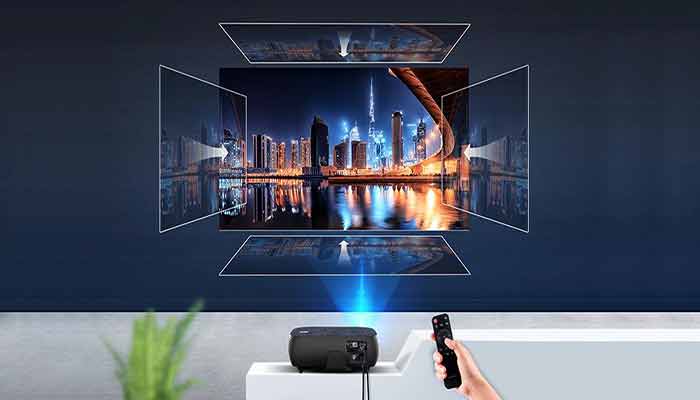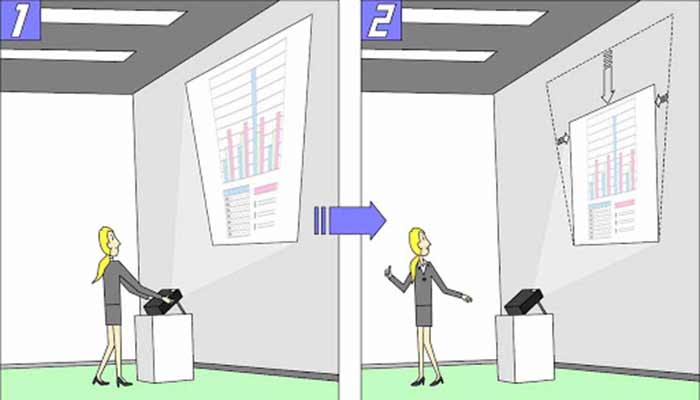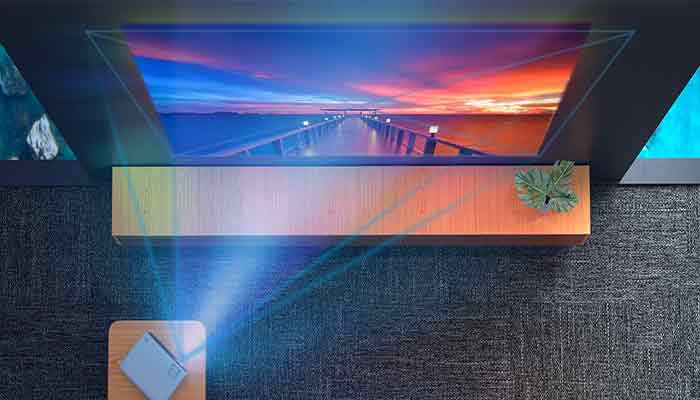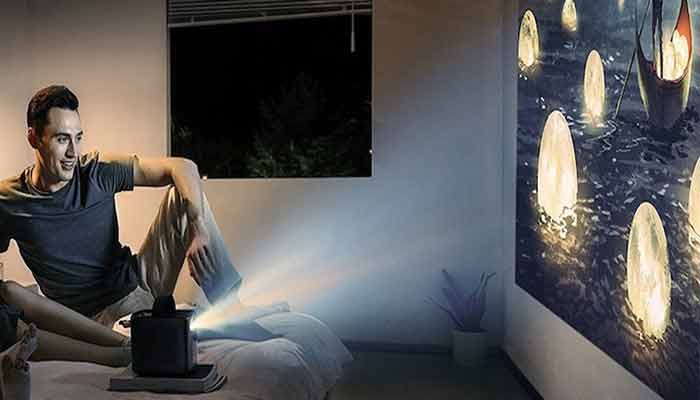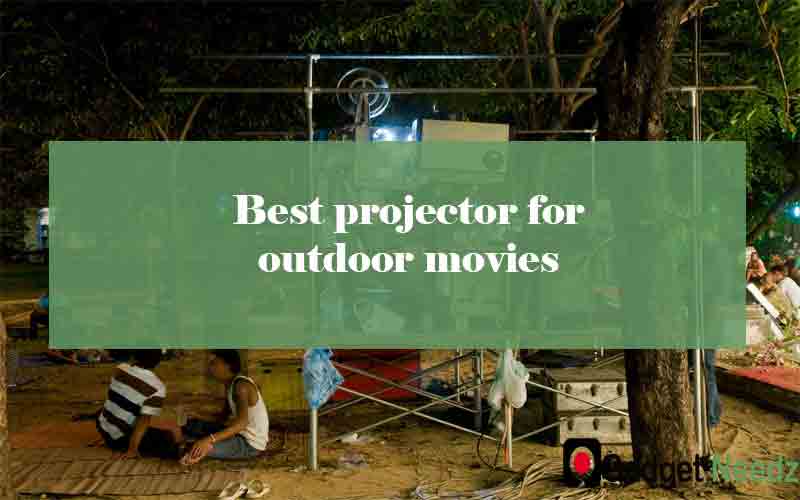Table of Contents
While it may not seem like a big problem, what actually happens is that the image of the movie or presentation starts to seem much smaller and distorted on the screen when you travel to different parts of a room which would otherwise have enough distance between them.
We will go into detail about Projector Keystone Correction and Lens Shift.
A lens shift refers to an image being shifted ever-so-slightly from the center by any other focal point than just where your eye is looking at. The lens shift is only in the very front and back of your image with the sides remaining straight.
This means that you can accidentally get your audience off-center at certain times when moving to different parts of a room during a presentation. You could power through it, but it would be much better to prevent this from happening in the first place.
The projector’s Keystone adjustment at the rear of it will adjust your projection to be centered with respect to both vertical and horizontal center points.
This area is where you have, or should have, an image centered perfectly with respect to where you are looking without any major distortion due to changing focal lengths.
What is keystone correction?
The keystone correction is where any front and back projection that is being projected comes into play. It isn’t just the projector that does this, but the lens as well. The keystone adjustment will compensate for the slight distortion in a lens by adjusting its focal length.
This can be confusing to the beginning projector owner because it’s not quite as clear as just turning your projector up or down in intensity. Your images can seem larger or smaller than you intended if they are not properly adjusted to your room’s distance.
In order to fix this, you need to change your projector’s keystone settings in the same manner as when changing its brightness or contrast. Adjust it from both the front and rear of your projector and use that as a guide. You want to adjust it so that it is centered left-to-right with respect to where you are looking on the screen.
What is Lens Shifting?
A lens shifting refers to an image being shifted ever-so-slightly from the center by any focal range other than where your eye is looking at. This is where the image on the screen seems much smaller and distorted when you move to different parts of a room which would otherwise have enough distance between them.
The best way to prevent it from happening?
Make sure the room you are in has the proper distance between all walls in which your projection will be running through. This is another common area that people get confused and go ahead and buy a projector without doing their research first.
Keystone Correction vs. Lens Shift
You may have heard that when adjusting the “lens shift” and “keystone correction” in a projector, the lens will shift.
This is not true to some extent. The adjustments will affect the lens at its focal length and will not change it at all. Both are adjustments for how your image is appearing on your screen at different focal lengths, but they are different.
These settings should all be adjusted together to make sure you do not have any major distortion in your image due to improper adjustment of the keystone or lens shift during the use of your projector.
The use of projectors is a growing trend among people. It allows them to be able to play their favorite movies on a screen or display presentations in an easy way. The only issue with them is that they can be somewhat expensive, especially for people who are just getting started and don’t have much money.
As stated above, the best way to avoid this problem from happening is by making sure that you have enough distance between any two adjacent walls that are parallel to the projector’s lens.
How to set up a Video Projector with Lens Shift and Keystone Correction
These are a few settings that you will want to have adjusted in your projector, and these adjust the lens shift and keystone correction.
- TMDS [Transparent Mirror Drive System]: This is found on most, if not all, projectors. It is at the bottom of your projector’s main unit. Adjusting this will affect how lenses work with your projectors. I suggest making sure it is adjusted to “automatically” for the best functionality possible.
- Lens Shift [Actual Adjustment] – this can be easily found on most projectors by searching for “lens shift” or “lens shift up/down”, depending on what system you are using. This is the adjustment you should be looking for when doing this.
- Keystone Correction – Found in the same area as “Lens Shift”, this setting is on your projector and will adjust your image to be centered left-to-right with respect to where you are looking on the screen. This can also be found using a keyword search and can change depending on different brands of projectors.
Downsides and Warnings of Lens Shift and Keystone Correction
Downsides and Warnings of Lens Shift
Lens Shift, whether it is manual or automatic, can be very hard to get adjusted to your liking. It can be very hard to get it just right for you, especially since there are many different projections that need to show the image in certain ways.
If you do not plan on using any projector that will use a lens shift of any type, then I suggest you look into camera resolutions on your phone and how they are affected with different lenses. There may be some sort of apps that can help you with this.
Downsides and Warnings of Keystone Correction
Possible adjustments of Keystone Correction may not work well with your projector. This may cause a problem where the image will have a very noticeable distortion around the center of your screen.
This can be corrected, but it is best to just fix it when you first get your projector and leave it at that so as to not have any problems later on down the line.
Keystone correction can also make it hard for people to adjust their projection set up at home by themselves, which makes having a professional set up your projector in the first place worthwhile.
Conclusion
All in all, lens shift is a great addition to any video projectors that allow it. This makes things like having a projector setup for your home theater possible with minimal effort. It allows you to have your projector placed in the corner of the room, or even on the ceiling!
Keystone correction is also a great tool to have on any projector as well, especially because some people prefer that the image of their screen be perfectly centered and not distorted.
Related Articles:
